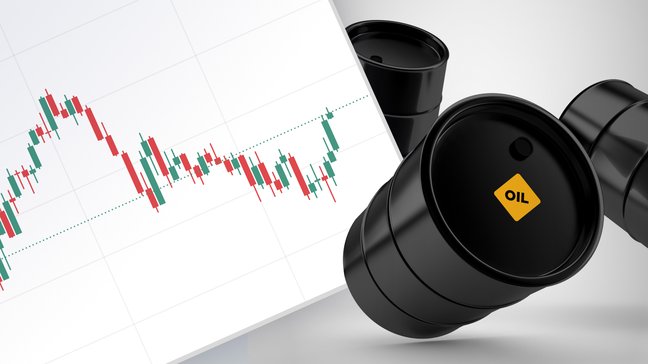The holiday season appears gripping the markets tightly amid a light calendar and mixed risk headlines. In doing so, the traders struggle to defend the US Dollar’s recovery as the Fed rate cut in 2024 appears reality, even if most policymakers push back dovish concerns.
The Greenback’s sluggish move fails to defend the commodity buyers but hopes of China stimulus allowed Antipodeans to edge higher. That said, USDJPY jumps the most among the G10 currency pairs as the Bank of Japan (BoJ) keeps monetary policy unchanged. Even so, EURUSD and GBPUSD edge higher whereas AUDUSD and NZDUSD extend the previous rebound.
Gold Prices print minor losses and Crude Oil snaps a four-day run-up while equities in the US, as well as in the Asia-Pacific zone grind higher.
Elsewhere, BTCUSD and ETHUSD also extend the week-start rebound as crypto industry players discuss spot ETF approvals with the US SEC.
Following are the latest moves of the key assets:
- Brent oil prods a four-day uptrend while making rounds to $78.00 by the press time.
- Gold price remains dicey around $2,025 at the latest, after recovering the previous day.
- USD Index lacks clear directions around 102.45, fading Friday’s recovery from multi-month low at the latest.
- Wall Street closed mixed and so did the Asia-Pacific stocks, as well as the equities in the UK and Europe.
- BTCUSD and ETHUSD print two-day uptrend around $43,000 and $2,250 at the latest.
Markets lack clear directions…
Fed officials’ defense of restrictive monetary policies fails to impress the US Dollar bulls even as geopolitical concerns and slightly better housing data put a floor under the Greenback. That said, the Oil price gains more attention as major producers keep suggesting more supply cuts and the Red Sea problem prevails but the odds of easing demand and US moves to tame geopolitical fears in the Middle East challenge energy bulls.
On Monday, Houthi officials said they rejected the US deal to restore peace in Yemen and stop the Red Sea attacks. Also, reports were suggesting the US readiness to announce details of Operation Prosperity Guardian which will protect shipping in the Red Sea and will be within an existing partnership of 39 nations that focuses on countering piracy.
This contrasts with the US Energy Information Administration (EIA) report suggesting a back-to-back monthly rise in shale oil production. The report, however, also expects a slight fall in the output during January.
Elsewhere, the US NAHB Housing Market Index rose to 37 from 36 while Federal Reserve Bank of Chicago President Austan Goolsbee cited significant improvement in inflation and a slight favor to the rate cuts in the next year. On the same line, San Francisco Fed President Mary Daly said that they “will still be quite restrictive even if cutting rates three times next year.”
China’s state planner, namely the National Development and Reform Commission of the People's Republic of China (NDRC), conveyed details of approving 144 investment projects worth 1.28 trillion yuan so far in 2023. The NDRC spokesperson also said that they will further promote the efficiency and effectiveness of investment, and improve stable growth of consumption. The same allowed traders to remain cautiously optimistic despite no major progress in the markets.
That said, the Bank of Japan (BoJ) matched market forecasts while keeping its monetary policy unchanged. The Japanese central bank also kept its forward guidance intact by defending the current Yield Curve Control (YCC) range below 1.0%. USDJPY initially jumped after the announcements as policymakers pushed back concerns about rate hikes in 2024.
Further, the Reserve Bank of Australia’s (RBA) Minutes showed that the decision to hold rates unchanged was taken after considering a 25bp rate hike, which in turn challenged the AUDUSD bulls.
Additionally, the Bank of Canada (BoC) Governor Tiff Macklem signaled rate cuts in 2024 and prod the USDCAD bears even if the crude oil remains firmer while the NZDUSD struggles to justify strong prints of ANZ business confidence and activity data for December.
It should be noted that European Central Bank (ECB) policymaker Peter Kazimir tried defending the policy hawks by saying, “Inflation optimism not enough to declare victory and move on to next stage.”
- Strong buy: USDCAD
- Strong sell: ETHUSD, GBPUSD, Gold
- Buy: USD Index, Nasdaq, USDJPY
- Sell: DAX, FTSE 100, BTCUSD, AUDUSD, EURUSD
Final readings of Eurozone inflation, US housing data eyed…
Although the economic calendar continues to lack top-tier data/events, especially after the BoJ, the final readings of Eurozone inflation for November and the US housing market data will entertain the momentum traders. Also important to watch will be the progress in the Red Sea and headlines surrounding China, not to forget the central bankers’ speeches. Given the current wave of expecting lower rates in 2024, the risk-on mood is more likely to prevail and the same will exert downside pressure on the US Dollar while helping the commodities and Antipodeans. It’s worth, however, that the lack of market participation could help the greenback to edge higher if the US data improves.
May the trading luck be with you!




